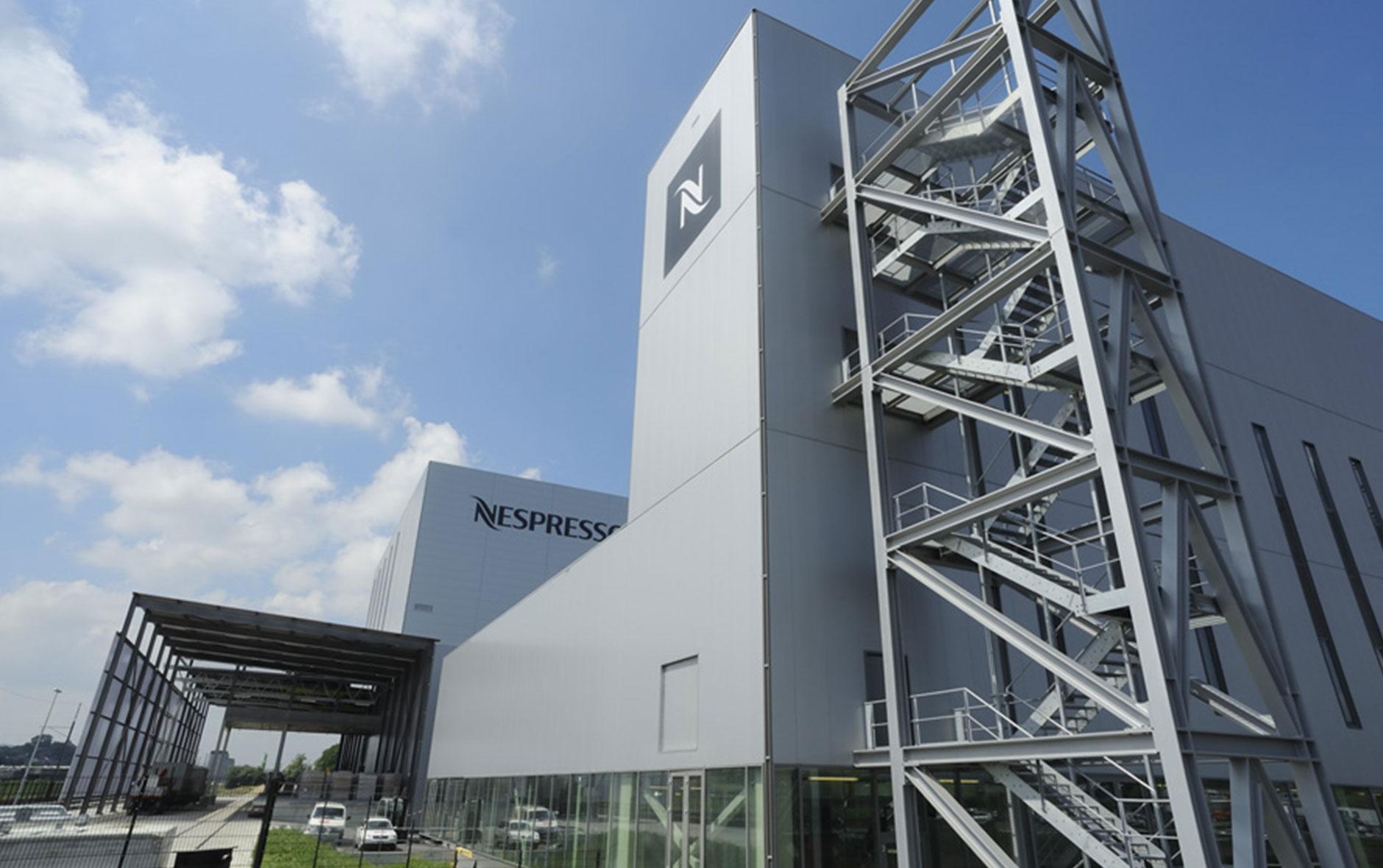Symbolic first stone evokes production centre mission
Construction work is now underway for the third Nespresso production centre in Romont, Switzerland, putting into action a commitment the company announced last spring. Joining the two existing Nespresso production centres in Orbe and Avenches, the Romont site is scheduled to be operational in 2015.
For the groundbreaking held at the site on April 25, 2013, Nespresso CEO Jean-Marc Duvoisin unveiled a symbolic first stone: a giant coffee bean made from the aluminium of approximately 800 Nespresso capsules. The sculpture sits atop a pedestal that holds a time capsule containing a PIXIE Steel Nespresso machine, a box of 16 Nespresso Grands Crus, an architectural plan of the site and a local newspaper from the groundbreaking day. Conceived by Jérôme Berbier, an artist and designer from Fribourg, the sculpture evokes the primary source of inspiration for Nespresso and signifies the future role of the production centre.
“More than laying the foundation of a new building, this day represents the concretisation of a major project in the company’s strategy. Initiated four years ago and carried by the continuous energy and determination of our teams and partners, this third production centre marks our confidence in our business model and in our future,” said Mr Duvoisin. “It is an investment in our coffee expertise and quality, two pillars for the sustainable growth of our company moving forward.”
Meeting consumer demand with long-term investment
The completion of the Romont production centre in 2015 will mark a further milestone in the company’s strategic development to meet growing consumer demand.
With a surface area of some 21,000 sq. metres, the future production centre will be anchored in the company’s unique Ecolaboration™ sustainability framework, integrating cutting-edge technology while minimising its environmental impact. The facility will capitalise on the expertise gained at the Nespresso production centres in Orbe and Avenches, in areas such as energy efficiency, waste separation and recycling. The proximity of the site to the national rail system will facilitate the rail transport of goods in and out of the factory, with 100% of green coffee being delivered by train.

